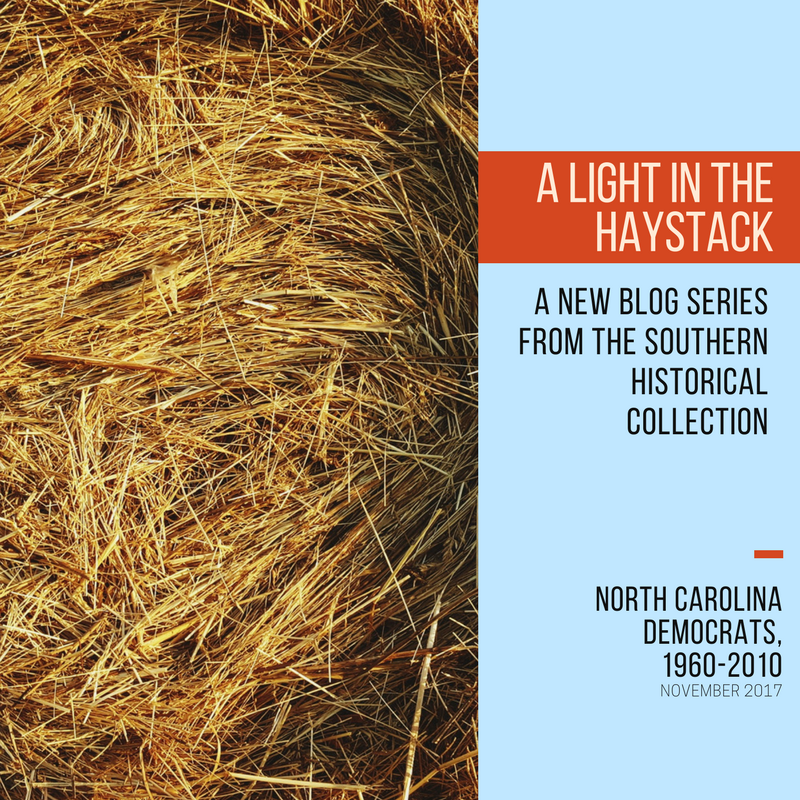
North Carolina Democrats have included an interesting assortment of characters over the past 200 years or so. In preparing for this blog, we quickly learned that the general assumptions about this party change a great deal depending upon which decade we focused. We chose this 50-year time period (1960-2010) because it reflects a recent and significant ideological shift in the party. While we have a large collection from one of North Carolina’s most distinguished democrats, Terry Sanford – this post intends to shine a light on other figures in the party, what our collections can say about NC Democrats at the end of the 20th century, and a glimpse at the scholarship on this subject.
Our dive into the archives confirmed what many political historians of the South already know: the SHC materials lean heavily toward the Democratic party in general, with most representatives falling between the years 1840 and 1920 (figure 1). Our quantitative review of collections revealed other patterns – for instance most of our politicians graduated from UNC, we have the highest representation of state level legislators (vs. national or local politicians), most of the politicians come from central and eastern North Carolina, and the political collections average about 2.5 Paige boxes of content.
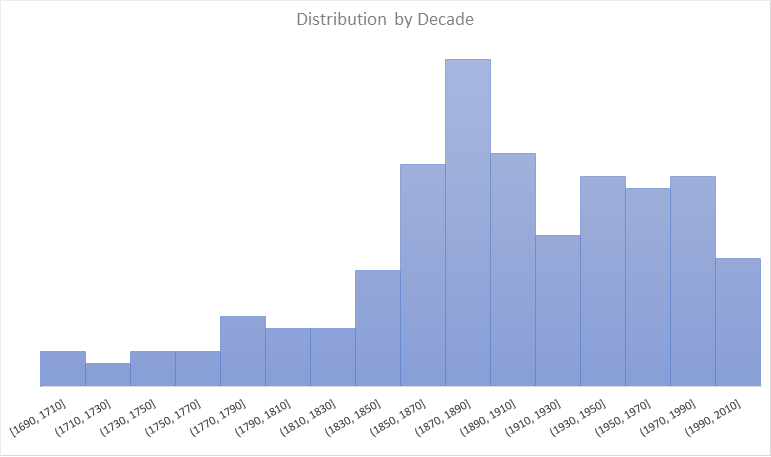
Political cartoonist Dwane Powell donated his papers to the SHC in April 2014. Powell is a retired editorial cartoonist who spent most of his career working for the Raleigh News and Observer. The Dwane Powell Papers, 1970-2016 feature some of Powell’s best cartoons from the 1970’s, 1980’s, and 1990’s. The drawings included below illustrate Powell’s views of an outdated and easily imitated Democratic party during the 1980’s (Figures 2 &3).
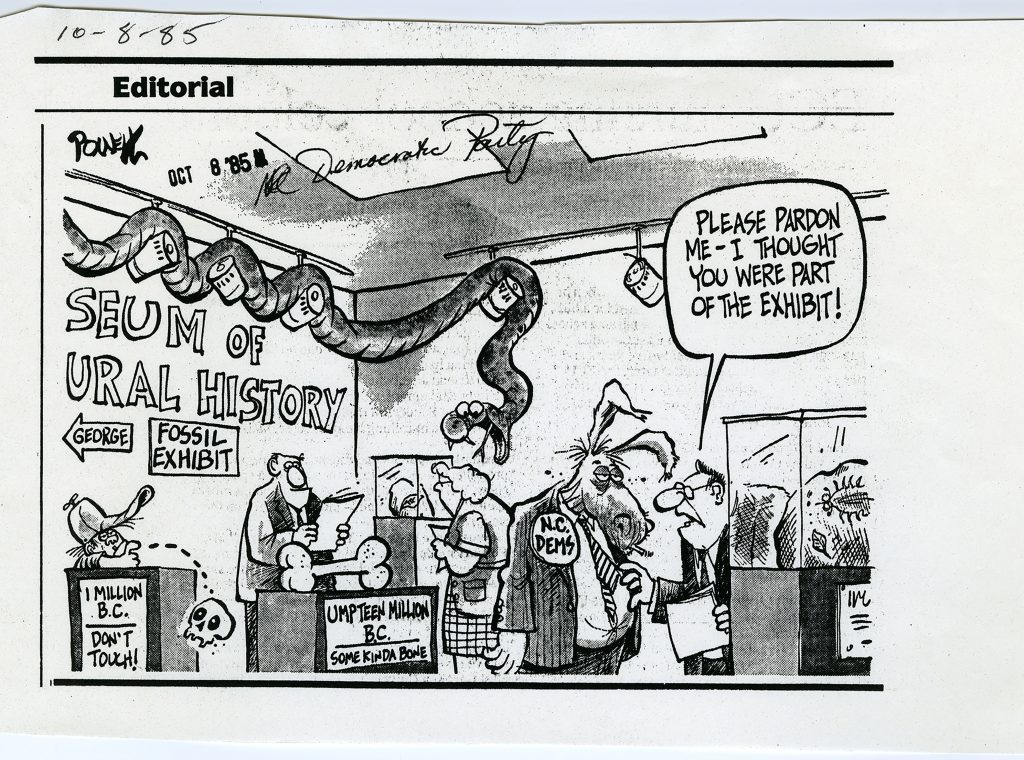
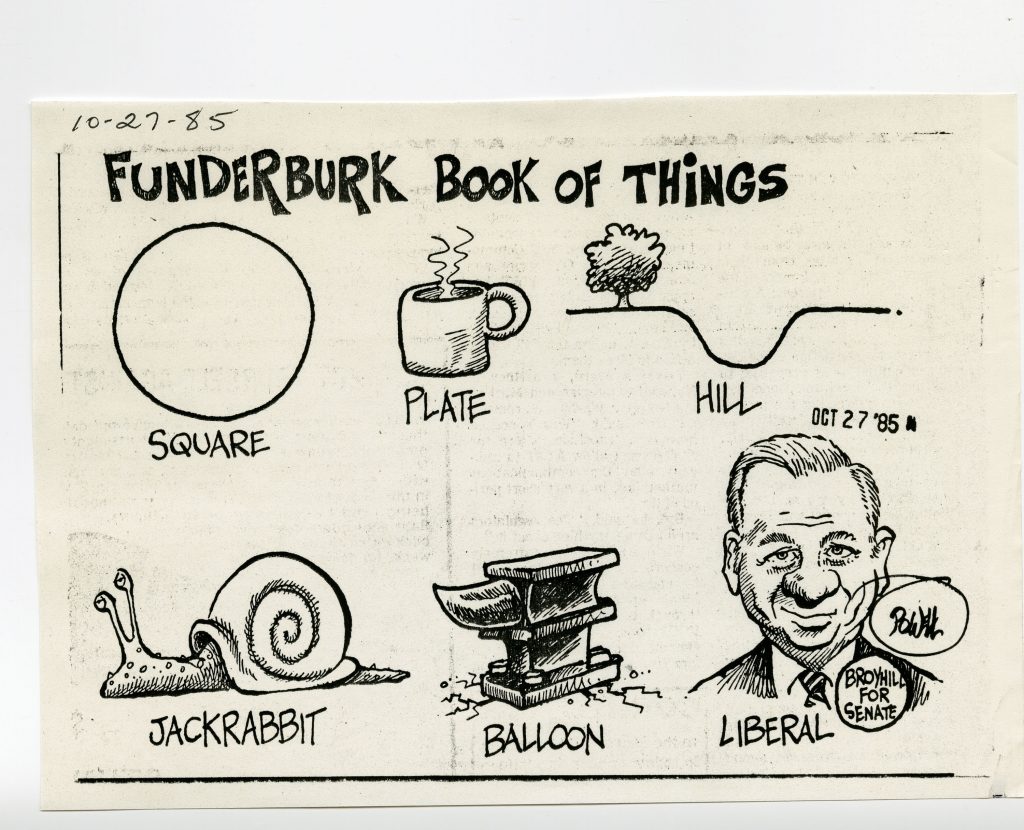
Another example of North Carolina’s Democratic Party depicted in the Southern Historical Collection comes from the George Miller Papers, 1971-2000. George Miller served in the state legislature continuously from 1971 to 2000. He was a strong proponent of child safety restraints in cars, raising the state’s minimum drinking age to 21, and laws to promote organ donation. In perhaps his most notable contribution, Miller put forth the legislation to allow vehicles to turn right on a red light (Figure 4).
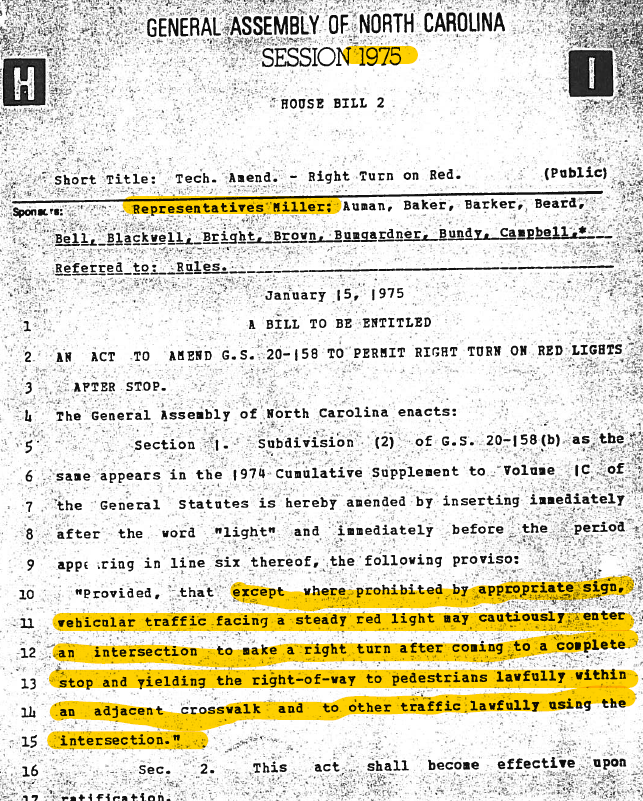
The identity crisis in North Carolina’s Democratic Party can be further understood by comparing two party giants; U.S. Senator Sam Ervin Jr (1954-1974) and former governor (1961-1965) and U.S. Senator (1986-1993), Terry Sanford (Collins). In the 12 years between their respective seats in the Senate, our state Democrats turn from an outspoken defender of racial segregation (Ervin) to one of the architects of the North Carolina Fund (Sanford). The North Carolina Fund was a series of experimental programs designed to reach across racial lines and address issues related to poverty across the state. Some may wonder what could cause such dramatic political party shifts in a state like North Carolina. Some political scientists point to demographic changes beginning in the 1980’s. For example, people migrating from Northern states and Central and South America can explain how North Carolina could return to a Democratic majority and support a Democratic presidential candidate in 2008 (Hood). This had not happened since Jimmy Carter in 1976. The article and dissertations alluded to below and the scholarship that supports them could provide great insight into the inner workings of the Democratic party during this time.
Lastly, to add a contemporary human element to our look at North Carolina Democrats, we interviewed one of our recent collection donors and North Carolina democrat, Eleanor (Ellie) Kinnaird. Kinnaird was the mayor of Carrboro (1987-1995) and a state senator (1996-2013). She wants to be remembered for her work on death penalty reform, voter access expansion, human trafficking advocacy, and environmental justice issues. Kinnaird counts her father (a judge), former First Lady Eleanor Roosevelt, her professors at Carleton College, and involvement with the League of Women Voters, as her biggest inspirations for going into politics. At one point in our interview, Kinnaird states, “it was a great privilege to shape public policy. I can’t imagine doing anything more gratifying than serving.” She certainly is an inspiration to women in her community and great example of how policy can positively impact people’s lives.
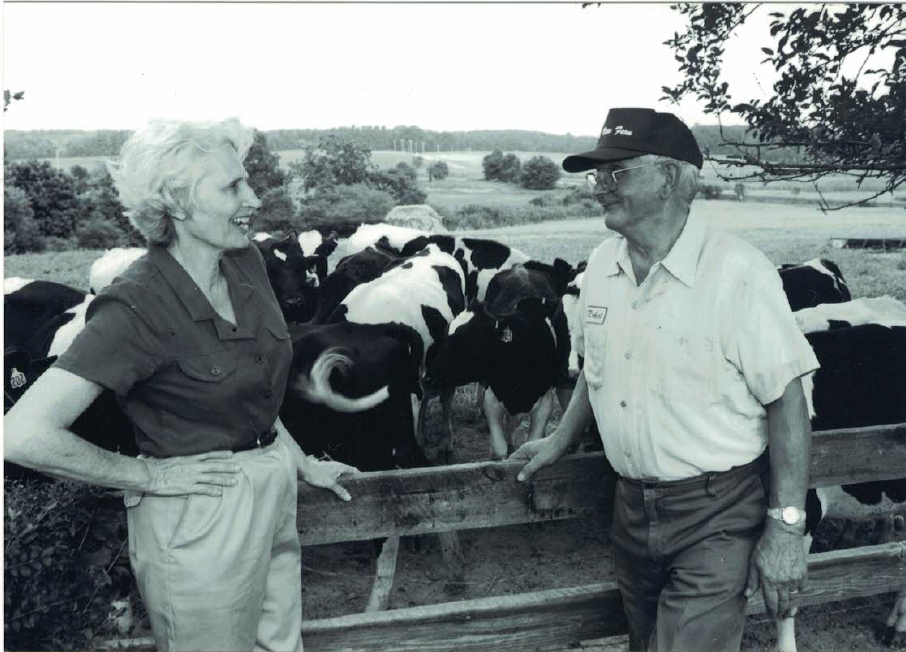
Hopefully this peek through the Southern Historical Collection’s material on North Carolina Democrats (1960-2010) will encourage you to look beyond party lines when voting or trying to understand the contours of an election. Chances are that each candidate’s definition of what it means to be a part of that party will vary drastically. As always, we encourage you to come to the reading room, look through the haystack of archival collections in the SHC, and see what kinds of connections you can make!

Thanks, Chaitra! It’s wonderful to see such a great example of an exploratory venture into the vast treasures of the SHC, and one that results in a cogent review of possibilities that can make a difference.